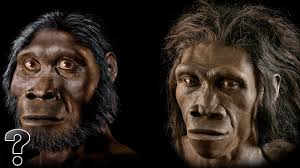Meaning of Evolution
The term "Evolution" was given by Herbert Spencer.Evolution is defined as a process of slow and gradual change seen in an orderly fashion. In other words, evolution is the gradual change in he...

Difference between Man and Apes
| S.N. | Man | Apes |
| 1. | The human species walk erect on two feet (bipedal). He is terrestrial, gregarious (lives in community) and omnivorous. | The apes are semi-erect, for-handed, tree-dwellers and less gregarious. Legs in men are 30% longer than the arms. |
| 2. | In man, the thumb is longer and it is more mobile to close in on other fingers. As a result, the hand can be used for a variety of purposes. | The thumb of the ape is short. |
| 3. | The retina in the eye of man is provided with cone cells that perceive different colors. | The retina in the eye of apes is not provided with cone cells. |
| 4. | In man, the brow ridge is not as prominent as in apes. | In apes, the brow ridge is more prominent than man. |
| 5. | The capacity of the human brain box is 100cc. | In gorilla it is 510cc. |
| 6. | The space between the two eyes is close enough for distance perception and stereoscopic vision. | The space between the two eyes is not close enough as it does not require distance perception and stereoscopic vision. |
| 7. | Teeth of an (incisor, canine, premolar and molar) are smaller and more ordered. | The jaws and nose are smaller than those of apes. |
| 8. | Bipedal locomotion in man leaves the arms and hand free for carrying or doing things, the movable joints of arms, wrists, hands, and fingers afford a great deal of versatility and the forelimbs can be used with great dexterity for handling tools. | There is quardpedal locomotion in apes for maintenance for proper body posture. |